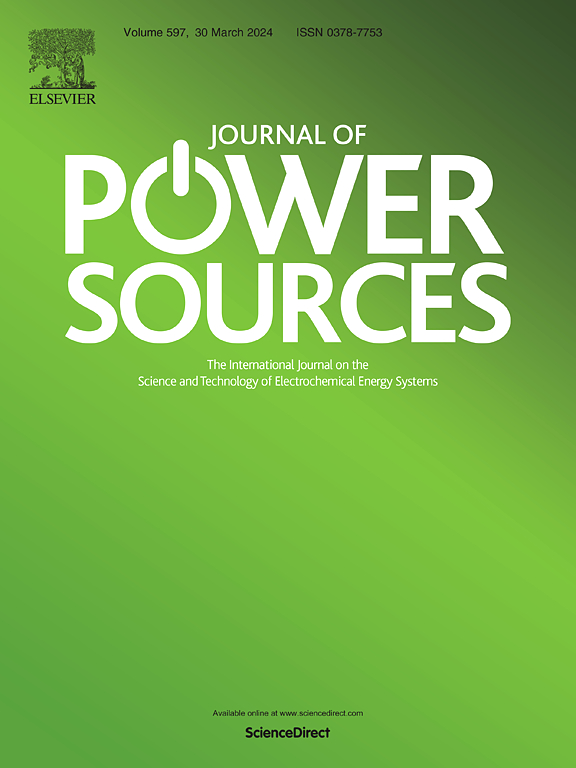Waste banana bract-derived porous carbon as anode for lithium/sodium-ion batteries with hybrid adsorption-pore filling/insertion mechanism
IF 7.9
2区 工程技术
Q1 CHEMISTRY, PHYSICAL
引用次数: 0
Abstract
Lithium-ion batteries (LIBs) and sodium-ion batteries (SIBs) are critical electrochemical energy storage devices with promising applications; however, commercial graphite cannot meet the growing energy demand owing to its limited capacity and rate performance. In this study, addressing the utilization requirements of waste banana bracts, a straightforward KOH activation and carbonization method at 700°C-900 °C is employed to produce porous carbon from waste banana bracts for use in LIBs and SIBs. The large surface area and heteroatom doping provide abundant storage sites, while the porous structure facilitates ion storage and diffusion through the creation of fast channels. As a result, the banana bracts-derived carbon exhibits high capacity and long cycle life. LIBs exhibit high capacities of up to 953.89 mAh g−1 at 0.1 A g−1, which remain at 320.41 mAh g−1 after 1000 cycles at 1 A g−1. Similarly, SIBs show remarkable capacities of 212.16 mAh g−1 at 0.1 A g−1, maintaining stable capacity over 1000 cycles. These capacities and rate performances surpass conventional graphite anodes. Moreover, electrochemical studies, including cyclic voltammetry, ex-situ X-ray diffraction, and ex-situ Raman spectroscopy, elucidate the storage mechanism, demonstrating the promising potential of banana bracts-derived carbon as an anode material for both LIBs and SIBs.

废香蕉苞枝衍生多孔碳作为锂/钠离子电池负极,具有混合吸附-充孔/插入机制
锂离子电池(LIBs)和钠离子电池(SIBs)是具有重要应用前景的电化学储能器件;然而,由于其有限的容量和速率性能,商用石墨无法满足日益增长的能源需求。本研究针对废弃香蕉苞片的利用要求,采用700°C-900°C的直接KOH活化碳化方法,从废弃香蕉苞片中制备多孔碳,用于lib和sib。大表面积和杂原子掺杂提供了丰富的存储位点,而多孔结构通过创建快速通道促进离子的存储和扩散。因此,香蕉苞片衍生的碳表现出高容量和长循环寿命。在0.1 A g−1下,锂离子电池的容量高达953.89 mAh g−1,在1 A g−1下循环1000次后,其容量仍保持在320.41 mAh g−1。同样,sib在0.1 A g−1时的容量为212.16 mAh g−1,在1000次循环中保持稳定的容量。这些容量和速率性能超过了传统的石墨阳极。此外,电化学研究,包括循环伏安法,非原位x射线衍射和非原位拉曼光谱,阐明了储存机制,证明了香蕉支架衍生的碳作为lib和sib的阳极材料的潜力。
本文章由计算机程序翻译,如有差异,请以英文原文为准。
求助全文
约1分钟内获得全文
求助全文
来源期刊

Journal of Power Sources
工程技术-电化学
CiteScore
16.40
自引率
6.50%
发文量
1249
审稿时长
36 days
期刊介绍:
The Journal of Power Sources is a publication catering to researchers and technologists interested in various aspects of the science, technology, and applications of electrochemical power sources. It covers original research and reviews on primary and secondary batteries, fuel cells, supercapacitors, and photo-electrochemical cells.
Topics considered include the research, development and applications of nanomaterials and novel componentry for these devices. Examples of applications of these electrochemical power sources include:
• Portable electronics
• Electric and Hybrid Electric Vehicles
• Uninterruptible Power Supply (UPS) systems
• Storage of renewable energy
• Satellites and deep space probes
• Boats and ships, drones and aircrafts
• Wearable energy storage systems
 求助内容:
求助内容: 应助结果提醒方式:
应助结果提醒方式:


